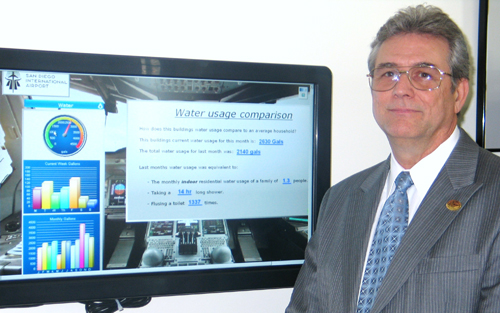By Lara Jackson
The San Diego International Airport has become the second airport to become a partner in the Environmental Protection Agency’s (EPA) WaterSense® program. The Dallas/Fort Worth International Airport (as reported in the March/April issue of the State Aviation Journal) became the first partner in the EPA program in February.
Many states throughout the country, especially the western United States are experiencing water shortage issues. The Colorado River, the main source of water for residents in the western US, is drying up. In fact demand is higher than the supply of water the Colorado River supplies. Water conservation is a real concern in the western states for many, with enforced water restrictions and residential education programs on the rise. So, in addition to reducing water usage, the San Diego International Airport also hopes to reduce natural resources overall.
According to Wayne Harvey, (Pictured), Director of Facilities Maintenance at the San Diego International Airport, the airport has already saved 40 million gallons of water in the 18 months since they have installed low use water fixtures, low flow toilets and urinals and automatic faucets.
“We also have a satellite monitoring system for irrigation where the system automatically monitors weather conditions and regulates landscape watering cycles accordingly,” explains Harvey. This irrigation system controls both when and where the water is applied, thus saving both water and money.
The main purpose of this partnership with the EPA is providing education about water conversation to the public. Since the San Diego International Airport’s partnership in the WaterSense program is only months old, the airport is still developing ways to educate its travelers, but the airport is already educating its employees.
Currently, the airport has an electronic monitoring panel which continuously displays the amount of water, gas and electricity the airport is using. Through the use of touch screens employees can also see how much carbon is emitted along with other comparison data such as household water usage equivalents. According to Harvey, there are plans to make this interactive panel available to the public and incorporate it into the terminal expansion that is currently in progress at San Diego International Airport.
“As a partner in the WaterSense program we [the San Diego International Airport] hope to share information and learn new and innovative ideas also. Overall, we want to reduce the use of all natural resources,” says Harvey.



